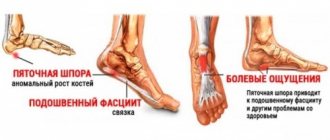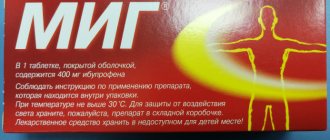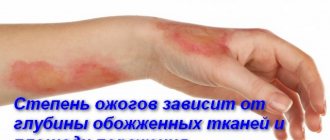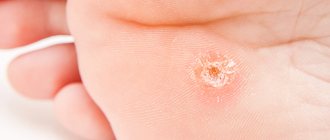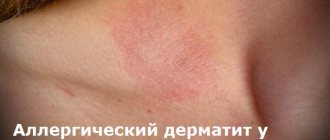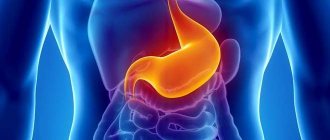Pancreatitis is one of the most common diseases of the human digestive system. The basis for the occurrence of a complex of characteristic symptoms (girdling pain, diarrhea, rise in body temperature) is a violation of excretory function with an excess of its own enzymes. Often this picture occurs after a loud feast with the consumption of large amounts of alcohol. Since it is sometimes difficult to deny yourself worldly fun, it is worth knowing how to properly treat inflammation of the pancreas.
Causes of pancreatitis
The main causes of pancreatitis are:
- frequent consumption of alcoholic beverages of any strength;
- uncontrolled use of the following medications: Aspirin, Metronidazole, Ibuprofen, Tetracycline, Furosemide, powerful hormonal therapy;
- intoxication due to poisoning with chemicals, food, low-quality alcohol;
- constant overeating, especially with foods that are not considered healthy: fried, spicy, smoked, processed foods, fast food;
- consumption of products that have been treated with pesticides, consisting of large amounts of E additives, the so-called “Eshek”;
- injuries or surgical interventions on the digestive system;
- gallbladder diseases, bile duct obstruction;
- gastritis, duodenal ulcer, stomach ulcer, sphincter of Oddi insufficiency;
- hypertensive crisis, cardiovascular diseases; atherosclerosis;
- hepatitis A, B, C; smallpox, purulent inflammation, dysentery, intestinal sepsis;
- allergic reactions more than three times a year;
- diabetes mellitus (it can also develop, on the contrary, due to the occurrence of pancreatitis);
- worms;
- genetic predisposition.
Antibiotics
Antibiotic drugs for pancreatitis may be part of the treatment. They are prescribed to prevent the development of such serious complications as:
- necrosis of pancreas cells;
- development of peritonitis;
- formation of cystic formation;
- abscess;
- sepsis.
Indications for mandatory prescription of antibiotics are:
- inflammation of the pancreas caused by bacterial microflora;
- violation of the integrity of the pancreatic ducts;
- abnormalities in liver function - the condition often accompanies periods of exacerbation of chronic pancreatitis.
Important! During the acute period, antibiotics are administered either intravenously or intramuscularly. After relief of symptoms, they are prescribed in tablet form.
The prescription of drugs is based on the results obtained, as well as the general well-being of the patient and the characteristics of the body. Reception is carried out in accordance with the developed scheme. Self-treatment with medications of this group is prohibited, as is the cancellation of pills prescribed by a doctor.
Symptoms of pancreatitis of the pancreas
The main ones are:
- frequent and prolonged hiccups;
- nausea turning into vomiting (vomit begins with food impurities, after which bile simply comes out);
- belching with a long, unpleasant aftertaste in the mouth;
- bloating, formation of excess gases;
- heartburn, especially in a horizontal position;
- the body temperature is almost constantly elevated, from 37.2 to 37.5;
- increased sweating, body stickiness;
- fluctuations in blood pressure, sometimes up and down;
- yellowish coating on the tongue, feeling of dry mouth;
- diarrhea with bloating, which is accompanied by noticeable pain in the intestines, or, on the contrary, constipation;
- hard muscles in the lower abdomen;
- shortness of breath;
- rapid weight loss;
- pain in the pancreas, mainly after eating;
- pale skin.
Especially, the above symptoms appear during the period of exacerbation of the disease. You can alleviate and stop attacks by adjusting your diet, following special recommendations and diet.
Painkillers
Irritation of pancreatic tissue by pancreatic juices is accompanied by pain of varying intensity, ranging from minor soreness to intolerable spasms. How to relieve pain?
Medicine gives the main preference to antispasmodics, which help relieve painful spasms. Relief of a person’s general well-being occurs by reducing the load on the inflamed pancreatic tissue, which is due to the removal of digestive enzymes accumulated inside the pancreatic ducts.
Spasmalgon is one of the approved painkillers from the group of antispasmodics.
The most commonly used types of antispasmodics are:
- Spasmalgon;
- Drotaverine;
- No-Shpa;
- Riabal;
- Spasmol.
In some cases, the patient is given injections of analgesics, which also have a good analgesic effect. But using them independently without a doctor’s prescription is prohibited, since some drugs in this group can worsen current symptoms. In the process of eliminating pain, Baralgin and Analgin can be used. The dosage is selected individually, just like the pain medication.
Types of pancreatitis of the pancreas
According to clinical characteristics, there are three main types of pancreatitis - acute, chronic and reactive. Let's consider the characteristics of each of them.
Acute pancreatitis
It is characterized by inflammation of the entire organ or its individual part; in the gland itself, suppuration can develop, tissue can disintegrate, and in the worst case, everything can end in hemorrhage. Often, this form of the disease occurs in parallel with problems in the gallbladder. Acute pancreatitis worsens when drinking alcohol, fried, or fatty foods.
Symptoms manifest themselves in different ways, from mild pain and nausea to intense attacks of pain, painful vomiting, the feeling of nausea does not stop for a long time, and the urge to vomit occurs even after a sip of water. Also, during this period, body temperature rises, sharp fluctuations in pressure occur, which can result in collapse (hypo-hypertensive crisis). Therefore, the general condition of the patient is quite serious and dangerous and requires immediate treatment and a special diet.
Chronic pancreatitis
This type of pancreatitis is called progressive; it occurs with severe disturbances in the functioning of the digestive and hormonal systems. It occurs quite often, between the ages of 30 and 60 years, and occurs due to the presence of acute pancreatitis, hepatitis, viral diseases, or is transmitted hereditarily.
It manifests itself as pain in the left hypochondrium, starting from a dull pain and increasing to intense, sharp, aching. The patient experiences relief in a sitting position with a slight movement of the torso forward; in a lying position, the pain worsens.
Also, symptoms of chronic pancreatitis are loose stools, flatulence, vomiting, decreased appetite, a feeling of weakness and depression.
Reactive pancreatitis
This type of pancreatitis manifests itself sharply, in particular after consuming certain irritating foods, after suffering prolonged stress, depression, or as a result of taking certain groups of pharmaceutical drugs. The most obvious symptom of reactive pancreatitis is the taste of bile in the mouth and dull, dull pain in the hypochondrium, constant vomiting or belching, which can only be stopped with fast-acting drugs, and after relief, the patient should follow preventive measures and carry out light, supportive drug therapy.
Primary symptoms of inflammation
Inflammation of the pancreatic parenchyma is medically called pancreatitis. Doctors have long ago identified the first signs of the development of this disease, which many people do not even pay attention to. But in vain, since it is in the initial stages of pancreatitis that there is a high chance of preserving the functionality of the gland.
The most important symptom of pancreatic inflammation is abdominal pain, which many women associate with the development of gynecological diseases. But it's very easy to check. Diseases of the pancreas in women have one peculiarity. If you take a horizontal position and press your knees to your stomach, the pain syndrome does not decrease, as is usually the case with gynecological ailments, but, on the contrary, intensifies. Relief from the condition is felt only in a sitting, half-bent position with a cold heating pad applied to the upper abdomen.
A cold heating pad reduces pain in pancreatitis and other diseases of the pancreas
The pain can be either acute and cramping or aching in nature. In the first case, it occurs against the background of the development of acute pancreatitis, appears completely suddenly and is accompanied by a number of other symptoms (more on them later). And in the second case, we are talking about the development of chronic pancreatitis, in which third-party signs of the disease may be completely absent or appear, replacing each other.
At the very beginning of its development, chronic pancreatitis can manifest itself:
- changes in taste preferences (an aversion to fatty and fried foods appears);
- heartburn that appears immediately after eating;
- periodic nausea (vomiting occurs extremely rarely);
- constipation;
- the presence of undigested pieces of food in the stool;
- decreased appetite and, as a result, decreased body weight.
Important! These symptoms of pancreatic disease in women can be supplemented by minor disturbances in the menstrual cycle, which is associated with inflammation of the endocrine cells of the organ and a decrease in the production of hormones involved in the regulation of metabolic processes. Their violation negatively affects the reproductive organs and can provoke minor deviations in their functioning.
Speaking about what signs of pancreatic disease may still occur in women, it should also be noted that with pancreatitis, an increase in blood sugar levels is quite often observed. This phenomenon is caused by a deficiency in the body of insulin, which is responsible for the breakdown and absorption of carbohydrates. This hormone is produced by endocrine cells of the pancreas, and if they undergo large-scale inflammation, then there is a high risk of developing diabetes mellitus, which is impossible to get rid of.
The main symptoms of diabetes mellitus developing against the background of pancreatic dysfunction
Treatment of pancreatitis with folk remedies, the most effective
Treatment methods for chronic pancreatitis
Method No. 1
Pour a tablespoon of red elderberry flowers into a glass of boiling water, leave for 2 hours, strain, take 50 milliliters three times a day after meals. The course is from two weeks to one month.
Method No2
Mix a tablespoon of cucumber, calendula, yarrow and two tablespoons of peppermint, take one heaped dessert spoon from the mixture and pour into half a liter of boiling water, simmer over very low heat for 15 minutes, leave for an hour under a closed lid. Divide the resulting volume into 2 doses, the first of which occurs in the morning, on an empty stomach, 20 minutes before breakfast, the second - before lunch or an afternoon snack. The course is individual, but no more than 2 months.
Method No3
Grind 10 grams of chamomile flowers, 20 grams of hawthorn fruits and immortelle flowers, 30 grams of dill seeds and peppermint leaves until smooth, place in a glass container. Pour 1.5 tablespoons of the prepared mixture into 600 ml of boiling water, leave in a thermos for several hours, no need to strain the liquid. Drink 200 ml three times a day after meals, the course is individual.
Method No4
Grind with a coffee grinder 50 grams of calamus rhizomes and dandelion roots, 25 grams of hop cones, thyme herb, and nettle roots. Take 5 heaping tablespoons of the mixture and combine with 200 ml of liquid honey, take a teaspoon twice a day, one month without a break.
Method No5
Pure oats - 1 tablespoon, soak in a glass of water, and put in a warm place for a day, then rinse, dry, and grind into flour with a coffee grinder or blender; place the resulting flour in an enamel bowl and mix with 10 ml of cold water.
After this, pour in 200 ml of boiling water, and boil the mixture for a few more minutes over low heat, cover with a lid and leave for 20 minutes, strain, you get a mass with the consistency of jelly. Drink once a day, in the morning.
Important! Fresh jelly should be prepared every day, otherwise the expected result will not be achieved.
Treatment methods for acute pancreatitis
Method No. 1
For two weeks, drink half a glass of freshly squeezed potato juice every day a few hours before lunch or dinner, 5-10 minutes after the potato drink, drink a glass of kefir, the reaction of the fermented milk product and starch creates a protective coating for the stomach and pancreas, stimulates the production enzymes. After a 14-day course, you need to take a break for 10 days. For maximum effectiveness, 4-5 courses should be repeated with breaks.
Method No. 2
Milk thistle seeds, grind into powder, take 30 minutes before meals, a dessert spoon 2-4 times a day, with a glass of water, for 1.5-2 months. During the year, 3-4 courses should be carried out. This method of treatment will benefit not only the pancreas, but will also improve filtration and protection of the liver, and will also help get rid of a few extra pounds.
Method No. 3
Dissolve 20 drops of 10% calendula tincture (can be purchased at a pharmacy) in 0.5 cups of hot milk, drink at night, every day for a month, after which a 10-day break is required. If the drug is well tolerated, six monthly courses should be taken with breaks.
Method No. 4
One kilogram of lemons should be minced or grated, together with the peel, but peeled, with 350 grams of parsley roots and the same amount of garlic without peel, mix the mixture well, and place in a glass container with a lid.
Infuse for 2 weeks, the first 3 days in a warm place, the next in the refrigerator. Take a teaspoon three times a day before meals with water or tea.
Important! The product is not suitable for people prone to hypertension and those with stomach ulcers or gastritis.
Treatment methods for reactive pancreatitis
Method No. 1
Grind 2 tablespoons of chicory roots into powder, pour in 250 ml of boiling water and simmer for 5-7 minutes, cover with a lid, leave until cool, drink chilled, half an hour before meals, 60-70 ml. The course is two to three weeks.
Method No. 2
Pour 200 ml of boiling water over a teaspoon of cumin seeds, leave for two hours, strain. Divide the prepared volume into three doses, which should be done before breakfast, lunch and dinner, in about 15 minutes. The course is individual, up to three months.
Method No. 3
Finely chop the burdock root, pour 2 tablespoons of the raw material into 200 ml of boiling water, leave covered for 3-4 hours, then boil and pass through a sieve. Drink 100 ml an hour after meals twice a day.
Method No. 4
100 ml of Brussels sprouts juice should be taken 3 times a day for one month. A fresh portion of the medicinal drink should be prepared daily.
Treatment of acute pancreatitis
As mentioned above, the picture of sudden inflammation of the pancreas most often occurs after consuming large amounts of fatty foods and alcohol. In this case, you must call an ambulance and hospitalize the patient. For effective treatment at the first stage use:
- Cold on the stomach in the projection of the damaged organ. This helps to constrict blood vessels and reduce inflammation;
- Functional rest of the pancreas. In simple terms, you need to fast for at least 24-48 hours. Due to hypersecretion of digestive enzymes, the disease progresses, so in the initial stages it is necessary to limit aggravating factors as much as possible, in this case, food intake;
- Taking antispasmodic medications. Effective during an acute attack of inflammation of the pancreas are No-spa 2 tablets (0.08 g), Papaverine 2-3 tablets (0.08-0.12 g) or Platyfillin 3 pieces (15 mg) once. If there is no analgesic effect, repeated use of the drugs is not recommended due to the possibility of adverse reactions;
Subsequent treatment should be carried out under the supervision of a doctor in a hospital and is carried out according to a similar scheme as for prolonged inflammation of the pancreas.
Drug treatment of pancreatitis
With a competent integrated approach, you can ease the course of the disease, as well as stop attacks and acute inflammation of pancreatitis.
Treatment of pain syndrome
Pancreatitis, especially in the acute phase, is characterized by attacks of pain, which can be of varying intensity, but with any of them, it is necessary to take painkillers that are safe in this case: No-Shpa, Novocain, Platiphylline, Papaverine.
It is not recommended to use a number of NSAIDs - Aspirin, Ibuprom, Nimid...
Depression of pancreatic functions
During the treatment of pancreatitis, it is important to turn off the functionality of the pancreas in time so that the cells of the gland and its nearby tissues are not damaged. For this purpose, the following drugs are used: Contrikal, Gordox, Aprocal.
You can also suppress the activity of the gland by taking antacid medications - Maalox, Omeprazole, Almagel. Due to this, the production and amount of hydrochloric acid is reduced several times, and this factor itself reduces the performance of natural gland enzymes.
Replacement therapy
In order to unload the pancreas, the use of enzymes based on lipase, amylase, protease is prescribed: Festal, Pancreatin, Mezim, Creon, Panzinorm, Pangrol.
These are the main groups of drugs used to treat pancreatitis; in some cases, Ampicillin antibiotics are prescribed, as well as physiological or saline solutions for intravenous administration.
Basic principles
Firstly, you need to understand that the disease can occur in acute and chronic forms, which means that treatment may differ. The first is characterized by high activity of the process and requires immediate hospitalization. Often an attack of pancreatitis can lead to surgery. Prolonged damage to the pancreas occurs much more easily with periods of exacerbation and remission, which are treated with conventional medications.
Secondly, there are basic concepts in the treatment of the disease, which are the same in both cases and include the following aspects:
- pain relief;
- elimination of dyspeptic disorders;
- fight against the inflammatory process;
- preventing the development of complications;
- rehabilitation;
- improving quality of life.
Depending on how the disease progresses, the range of healing measures may differ.
Prevention of pancreatitis
Measures to prevent such an unpleasant disease are quite simple, their basis is a correct, healthy lifestyle:
- Do not abuse alcoholic beverages, smoking, including hookah.
- Correctly compiled menu for pancreatitis. Avoid foods that can irritate the membranes of the pancreas, as well as fried, heavy, fatty foods.
- Avoid diseases such as gastritis, hepatitis, cholelithiasis, stomach or duodenal ulcers. Therefore, if you have health problems in the gastrointestinal tract, it is recommended to visit a gastroenterologist every 3 months and do ultrasound examinations every six months to keep the stage and extent of the disease under control.
- Eat rationally, nutritiously, periodically fast, one day every three to four weeks is enough.
- Avoid psycho-emotional stress.
- Lead an active lifestyle, engage in light physical activity, which will allow you to maintain your weight within normal limits and produce the right amount of adrenaline in your body.
Pancreatitis is treatable; when diagnosed at an early stage of the disease, any degree of the disease can be maintained with the help of a specialized diet and drug therapy. And simple preventive measures will help, in turn, not to develop and worsen inflammation in the pancreas further.
Rate this article: ( 23 ratings, average: 3.91 out of 5)
Diagnosis of pancreatitis
Signs of chronic pancreatitis can be difficult to recognize, because the pancreas is located quite deep in the human body. This is associated with certain difficulties in making a diagnosis.
To diagnose an insidious disease, measures are used that help present the overall clinical picture. This includes examining the patient, examining the activity of blood and urine enzymes. Angiography of the vessels of the gland and ultrasound can tell you a lot.
The fact of the development of pancreatitis can be established due to the amount of a special enzyme, amylase, in the tests. In addition, the inflammatory process of the pancreas can cause an increase in blood sugar levels, causing its appearance even in the urine. Laboratory studies help determine changes in blood parameters and carbohydrate metabolism disorders. Against the background of pancreatitis, ESR always increases and leukocytosis develops.
In addition to ultrasound, computed tomography can be performed, which is a more advanced diagnostic method. Using this method, it is possible to better visualize the tissues and existing tumors in this organ.
If it is necessary to establish the degree of tissue necrosis and the level of metabolism, then the doctor may prescribe magnetic resonance imaging.
Drug therapy for pancreatitis
Pancreatin is an enzyme used for chronic pancreatitis.
In acute pancreatitis, first of all, you need to stop eating for several days. The body is supported through intravenous infusion of nutrient solutions: sodium bicarbonate, glucose, hemodez, administration of albumin, blood plasma. Only drinking plenty of alkaline water without gas is allowed.
In case of hemorrhagic pancreatic necrosis, the most severe form of pancreatitis, loading doses of Trasylol, Gordox, and Contrical are used to suppress the activity of enzymes and reduce the rate of their synthesis. For the same purpose, intragastric hypothermia is used, cold is applied to the area of the gland projection. The use of antibiotics will help cope with the infection if complications arise. Auxiliary methods include laser irradiation and plasmaphoresis to remove toxins from the body. For edematous and chronic pancreatitis the following are used:
- antispasmodics (Eufillin, Drotaverine, Nitroglycerin)
- cytostatics (Cyclophosphamide, Vincristine)
- anticholinergics (Atropine, Pentoxyl, Scopolamine, Methyluracil)
- enzymes (Pancreatin, Mezim, Festal, Methionone)
- antibiotics to prevent infection (Carbennicillin, Kanamycin, Trichopolum, Tobramycin)
- antihistamines (Promethazine, Chloropyramine)
If diabetes mellitus is a complication of pancreatitis, treatment is carried out as prescribed by an endocrinologist. Complications of chronic pancreatitis can also include cysts and malignant tumors of the pancreas. Since they are hormonally active neoplasms, their appearance can be diagnosed in addition to ultrasound and MRI studies, also by the release of excessive amounts of hormones.
What diseases cause pain
For pain in the pancreas, it is important to understand what disease caused it in order to carry out adequate therapy. What pancreatic diseases cause pain:
- Acute pancreatitis is an inflammatory process that begins due to the fact that enzymes stagnant in the gland begin to dissolve the surrounding tissue. If an infection is added to the process, an acute form develops.
- Chronic pancreatitis often develops after an attack of acute pancreatitis, diseases of the liver, thyroid gland, etc. Gradually, under the influence of the pathological process, healthy tissue changes to scar tissue.
- Pancreatic necrosis - tissue becomes dead.
- Cholecystopancreatitis - as a result of a failure in the production of bile, the process of digesting fats and carbohydrates is disrupted.
Tumors of various etiologies, cysts, fistulas, and stones can also cause pain.
What other diseases can cause pain:
- Cholelithiasis, cholecystitis, biliary dyskinesia: it is against the background of chronic long-term problems with the gallbladder that pancreatitis gradually develops.
- Ulcers of the stomach and duodenum located nearby.
- Intestinal infection: Just as inflammation of the pancreas can lead to intestinal upset, an intestinal infection can cause pain in the pancreas.
- Diabetes.
Physical examination for signs of inflammation of the pancreas
What are the signs of inflammation of the pancreas during examination? First of all, the doctor pays attention to the deterioration of the patient’s general condition. The patient is most often agitated, covered in sweat, and pale. In acute pancreatitis, a drop in blood pressure, severe tachycardia, and increased breathing may be observed. If inflammation of the pancreas is suspected, the abdomen is palpated. For this purpose, the patient is placed on his back and asked to bend his knees. Even a superficial touch to the abdominal wall can cause discomfort. Palpation signs of inflammation of the pancreas in adults are easier to identify. After all, the patient can indicate a specific location of pain. Unpleasant sensations are noted at the projection points of the pancreas. These include the Shoffar and Gubergritsa-Skulsky zones. The first is a triangle bounded by 3 lines. One of them is drawn from the navel to the right and upward at an angle of 45 degrees. The second is the midline of the body. The third connects the 2 previous points, it is carried out 6 cm above the umbilical ring. The Gubergritsa-Skulsky zone corresponds to the Choffard triangle, but is located on the left side of the abdomen.
To establish the affected area of the pancreas, 3 points are identified. Thanks to this, they determine in which part of the organ the inflammation is localized. Among them:
- Mayo-Robson point. It can be determined by drawing a line from the navel to the left costal arch. If we divide this segment into 3 parts, then the Mayo-Robson point will be located on the border of the middle and upper third. This is a projection of the tail of the pancreas.
- Desjardins point. Determined by drawing a line connecting the navel and the right armpit. The point is located on a segment of 5-7 cm. The head of the pancreas is located here.
- Kacha point. It is located 4-7 cm above the navel along the outer edge of the left rectus abdominis muscle. Soreness at this point means that the inflammation is localized between the tail and body of the pancreas.
In addition, signs of pancreatitis include changes in the surface of the tongue. It is covered with a white or yellowish coating and may be slightly dry.
Localization of the inflammatory process
Useful article? Share the link on VKontakte
If the pancreas is inflamed, then the pain can be different: aching, cutting, stabbing, with a specific localization, for example, under the right rib, or without localization at all throughout the abdominal cavity, in the back or groin. The type of this pain directly depends on which part of the gland is inflamed: the body, head or tail. When the localization of pain is blurred, doctors often talk about a complete disease of the organ.
Aching pain in the middle part of the abdominal cavity indicates that the body of the pancreas is inflamed; if the pain is felt in the right side, the head of the gland is inflamed, and if in the left, the tail is inflamed. The presence of the last two cases is much worse, because a space-occupying formation (tumor) forms in these parts.
In the head of the pancreas
A general change in the size of the pancreas is much safer than enlarging any part of it. The head of the gland has a special shape and unique structure: in an adult it is located at the level of the first two vertebrae, and in a newborn baby it is slightly higher. In adulthood, the normal size of the head of the pancreas should reach up to 35 mm, and if it is smaller or larger in size, then this is considered a pathology.
A mass formation in the head of the pancreas is usually detected during an ultrasound of the abdominal cavity and is considered a dangerous disease. It can be benign or substandard, which requires immediate removal. This disease often occurs in people over 60 years of age. Even visually, an experienced doctor can detect the first signs of inflammation of the head of the gland: a change in skin color and yellow coloration of the whites of the eyes. Treatment of this form of the disease occurs in a hospital setting.
In the tail
The tail of the pancreas has an upwardly curved pear-shaped shape and comes close to the spleen. In an adult healthy person, the optimal width of the tail of the organ is 20-30 mm, and its length is about 15 cm. A severe pathology of the tail of the gland is its expansion or thickening, against the background of which obstruction of the splenic vein or subrenal form develops.
A tumor in the tail of the gland occurs rarely: about a quarter of all gastrointestinal diseases. But if it is diagnosed, then often the tumor is immediately malignant and almost impossible to treat, since it is discovered late, when it has already reached a significant size. When operating on a tumor in the tail of the pancreas, doctors often have to remove nearby organs.
Treatment of diseases
If the pancreas does not work, the digestion process and metabolism in the body are completely disrupted. If the pathological process is left to chance, it can lead to serious consequences, requiring constant dietary restrictions, as well as lifelong use of pills.
If a person is attentive to his health, he will be able to detect the development of pathological changes in the body in the early stages. If the exocrine function malfunctions, patients' appetite worsens, and severe fatigue appears even with minor physical work.
Ultrasound examination of the pancreas can confirm or refute the diagnosis
Auxiliary medications
As part of complex treatment, drugs are used that normalize the functioning of the gastrointestinal tract. For diarrhea that accompanies exacerbation of pancreatitis, the patient is prescribed specialized medications. What can you drink if you have upset stool? Smecta and Hilak Forte are recommended. Medicines gently stop diarrhea, while simultaneously normalizing the disturbed microflora of the gastrointestinal tract.
The entry of bile into the general bloodstream leads to the development of severe intoxication. Its signs: uncontrollable vomiting, diarrhea, impaired consciousness. To alleviate the condition, the patient is prescribed sorbents, for example, activated carbon or Enterosgel. If the chronic form of pancreatitis has become the cause of impaired intestinal motor function, then the drug Trimedat is used in the treatment process.
Antisecretory
Antisecretory drugs are used to reduce the production of digestive juice by stomach receptors. Treatment is carried out in a short course. The dosage is calculated individually, based on the current clinical picture and analysis results. It is strictly forbidden to cancel the selected drug, since the return of gastric secretions to the original volume can provoke a worsening of the condition.
Ranitidine is an antisecretory agent used in the treatment of peptic ulcers.
Ranitidine, Cimetidine, Famotidine may be prescribed. The latter drug is the most effective in treating exacerbations of the disease, therefore it is often prescribed for pancreatitis in adults.
Types of pain in the pancreas and diseases associated with it
The nature of the pain depends on the causes of its occurrence:
- Pain in the right hypochondrium indicates problems with the liver.
- Girdle pain, in which acute attacks can radiate to the back or shoulder blade, is inflammation of the gallbladder.
- The pain starts from the solar plexus and goes to the back, sharp pain under the right or left hypochondrium are signs of pancreatic inflammation. This pain increases when lying down (usually at night).
- Cutting pain in the upper left abdomen and solar plexus with blue discoloration around the navel indicates damage to the spleen.
- Attacks of stabbing and cutting pain throughout the abdomen, indigestion (diarrhea or colitis), drops of blood in the stool - disruption of intestinal function.
- Aching pain in the left abdominal region and bouts of vomiting - gastric syndrome.
- Acute pain in the lower abdomen, radiating to the navel - appendicitis.
Yoga for pain in the pancreas
Many diseases are caused by abnormal changes in smooth muscle tone. These processes cannot be controlled, but by mastering several asanas that can be performed at home, you can prevent the development of complications.
Pavanmuktasana has a beneficial effect on the functioning of all internal organs and activates the functioning of the pancreas. To do this, you need to stand up straight, lower your arms, raise your right leg bent at the knee and press it to your chest. Place your left hand on your knee and grab your ankle with your right hand. Stand like this for 6 seconds, then return to the starting position. Do the same on the other leg. Perform this exercise 6 times daily.
Paschimottanasana stimulates the functioning of internal organs and has a beneficial effect on the gastrointestinal tract. You need to sit down with your legs stretched forward, lean forward and down, and reach your ankles with your hands, your head should rest on your knees, after 6 seconds we return to the starting position. Do it 3 times.
Baralgin against pancreatitis
This drug is used to relieve pain. It is especially effective at the initial stage of pathology development and at its middle stage. It is used as prescribed by the attending physician, as in case of incorrect doses it can worsen the general condition of the patient with pancreatitis.
The main active ingredient of Baralgin is a combination of metamizole and pitofenone. The combined effect allows you to obtain a therapeutic effect within the first 15 minutes after taking the tablet. For severe pain, Baralgin must be administered intravenously or intramuscularly.
The drug Baralgin is used to relieve pain
When using the tablet form of the drug, 1-2 tablets are prescribed up to three times a day. When administered intramuscularly, the dosage is 2-5 ml of the drug solution, also up to three times a day. With intramuscular infusions, the procedure is performed very slowly, the patient is administered no more than 1 ml per minute. The dosage for intravenous infusions is 2 ml. If necessary, the same amount of Baralgin can be administered after eight hours.
Attention! The duration of therapy with Baralgin depends on the degree of complexity of the patient's condition. It can last from one day to a week. At all stages of administration, the condition of the kidneys and liver should be monitored.
How to relieve an acute attack
When the pancreas hurts very badly, medical attention is needed. Self-medication in such cases can lead to dire consequences. After all, pain can be caused by blockage of the ducts, tumor growth or tissue necrosis. If treated improperly, these processes progress rapidly, and an abscess, blood poisoning, or peritonitis may form. Even a normal exacerbation of chronic pancreatitis is also dangerous. Even though patients usually know how to relieve pain, it is still recommended to consult a doctor. After all, each attack increases the risk of developing necrotic processes and fibrous tissue degeneration.
Therefore, if acute girdling pain, nausea, weakness and upset bowel movements occur, you should immediately call an ambulance. But you still need to know how to relieve pain in the pancreas, because it may take some time before the doctor arrives.
To relieve an acute attack, it is recommended to apply a heating pad with ice to the stomach.
First of all, you must immediately stop eating any food. It is advisable to fast for 2-3 days; during this time you are allowed to drink only still mineral water or rosehip decoction. This provides rest to the diseased organ and speeds up its recovery. A heating pad with ice placed on the pancreatic area also helps reduce pain. Sometimes the patient is recommended to stand on all fours - in this position the pressure on the nerve plexus is reduced. But in any case, you need to move as little as possible.
Self-administration of painkillers is not recommended. After all, during an acute attack, taking pills is contraindicated. All medications are administered to the patient intramuscularly or intravenously.
Most often, Analgin, Paracetamol, No-Shpa or Papaverine are prescribed for this. But when they are ineffective, narcotic analgesics are used, for example, Tramadol.
Features of treatment at home
When the pancreas hurts, it is necessary to establish the exact cause of the unpleasant symptom and eliminate it. A person needs to do a little analysis of everything he did during the day and what he ate. After all, painful sensations in the gland can be provoked by both minor errors in nutrition and stress, excessive physical activity, smoking, taking certain medications, etc.
The most common cause of pain in the pancreas is poor nutrition. Eating fatty, fried, sweet, floury, spicy and salty foods puts a strong load on the gland, which leads to activation of inflammatory processes in it and the occurrence of unpleasant sensations. Therefore, if you experience pain in the pancreas, the first thing you need to do is review your diet.
The following must be excluded from it:
How to cure pancreatitis at home
- all fatty and fried foods;
- dairy and fermented milk products with a high fat content (more than 1.5%);
- fatty meats and fish (even boiled);
- rich meat, fish and mushroom soups;
- butter;
- salo;
- baked goods;
- confectionery;
- sausages, frankfurters, small sausages;
- hot sauces and seasonings;
- pickles;
- canned foods;
- smoked products.
Diet is key in treating pancreas. Without it, the effectiveness of therapy is reduced several times.
In addition, it is necessary to eat properly. You should eat in small portions, but often (at least 5 times a day), and the food must be warm (cold and hot foods and drinks are prohibited) and, if possible, ground.
Speaking about what to do at home if pain occurs in the pancreas, it should also be noted that the patient will need complete rest to relieve discomfort. He needs to stay in bed and protect himself from stressful situations. A prerequisite for treating pancreas is giving up bad habits.
Inflammation of the pancreas: signs and treatment of pathology
Treatment of acute pancreatitis most often comes down to surgery. For chronic inflammation, drug therapy is indicated. It is prescribed according to the existing signs of pancreatitis. Treatment includes:
- Anesthesia. The drug "Ketonal", "Analgin" is used. For severe pain, use the medication Promedol.
- Replacement therapy with enzyme preparations. Prescribed to ensure normal digestion of food. The medications “Pancreatin”, “Creon”, “Festal” are used.
Diet is an important component in pancreatic pathologies
When treating any pathology of the pancreas, it is especially important to pay due attention to diet.
For patients experiencing abnormalities in the functioning of this organ, a list of products that can be consumed is provided. The menu must contain white bread; it is allowed to eat black bread baked yesterday.
The patient's daily diet should contain first courses. To prepare second courses, it is allowed to use lean meats (beef, chicken, rabbit), only boiled or steamed fish, meatballs, and stews.
Vegetables are consumed in any form, just not fried.
Avoid any fatty foods. A small amount of butter or vegetable oil is allowed. You can eat one egg per day.
It is better to drink compote, jelly, weak tea, and refrain from other drinks.
Avoid eating excessively hot or cold foods.
Antacids
Drugs from this group are used to relieve the painful symptoms of inflammation. Medicines reduce the acidity of gastric juice, neutralizing hydrochloric acid and minimizing its aggressive effects. The components included in their composition reduce the level of pepsin.
What antacids can be used? Alumag, Almagel, Maalox, Gastratcid are prescribed for use. The products provide a quick but short-lasting effect. To extend the period of action of antacids, the patient is prescribed enzymes or antienzymes. Everything is individual.
In some cases, antacids are prescribed as a course of treatment, lasting at least two weeks.
How to recognize pancreatic inflammation
Manifestations of pancreatitis depend on its form. The acute course is characterized by a sudden onset of symptoms and a significant deterioration in the patient’s well-being. Most often, an attack begins 1.5–2 hours after eating a heavy meal or drinking alcohol. The first signs of developing pancreatic inflammation are heaviness in the abdomen, headache, dizziness, and sudden loss of appetite. Subsequently, specific symptoms arise:
- stabbing, cutting, cramping pain in the abdomen (most often under the ribs);
- nausea, repeated vomiting that does not bring relief (in the first portions of vomit, undigested food particles can be found, later vomiting occurs with water or with bile impurities);
- general disorders (the patient becomes pale, body temperature may rise, blood pressure drops, and the pulse accelerates, loss of consciousness is possible).
With localized inflammation of the pancreas, variations in pain are possible. Thus, when the “tail” of the organ is damaged, pain is concentrated in the area of the left hypochondrium. Involvement of the “body” of the gland in the pathological process causes the central position of the pain (immediately under the sternum). When the “head” of the pancreas is inflamed, patients experience right-sided pain.
If inflammation affects the common bile and pancreatic duct, the patient experiences symptoms of obstructive jaundice: icterus appears in the sclera of the eyes and mucous membranes, and itching of the skin.
In the reactive course of acute pancreatitis, the gland tissue becomes necrotic, and its enzymes enter the systemic bloodstream. At the same time, signs of general intoxication of the body increase - weakness, dizziness, nausea, fever, diarrhea, urination problems. With this course of the disease, death is possible.
Septic lesions of the organ pose a particular danger. When abscesses or pus-filled cysts appear, the pancreas capsule may be damaged, purulent contents may enter the abdominal cavity and peritonitis may develop. The general signs of intoxication include a board-like tension in the anterior abdominal wall and dagger-like girdling pain.
Chronic inflammation of the pancreas
Indolent damage to the gland has a less pronounced clinical picture. Symptoms are mild and partially impair the patient’s ability to work. Attacks are provoked by physical activity and consumption of junk food, alcohol, and stress. The patient experiences aching, stabbing or dull girdle pain in the abdomen. Changes in the consistency and frequency of stool (towards diarrhea) are often observed. Acute signs of disturbances in the functioning of the pancreas appear over several hours or days, and then gradually subside.
During periods of remission (when there are no pronounced symptoms), patients suffer from alternating diarrhea and constipation, belching with an unpleasant odor, a feeling of heaviness in the abdomen and flatulence. With a long course of chronic pancreatitis, a decrease in body weight, signs of vitamin deficiency (since the absorption of nutrients is impaired), and dull pain in the abdomen are possible.
Chronic pancreatitis is dangerous because low-grade inflammation leads to irreversible changes in the structure of the gland. In addition, the formation of various tumor structures is possible.

